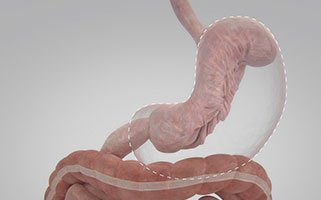Are you looking for an effective weight loss solution without the risks and recovery time associated with traditional surgery? Endoscopic Sleeve Gastroplasty (ESG) might be the answer you’ve been searching for. This minimally invasive procedure offers numerous benefits, including quicker recovery, lower risk, and impressive weight loss results. In this article, we’ll explore the advantages of ESG, identify who makes an ideal candidate, and walk you through the entire process from consultation to post-procedure care. You’ll also hear inspiring success stories and learn about the lifestyle changes necessary to maintain your weight loss. Whether you’re considering ESG or just curious about its potential, this comprehensive guide will provide you with all the information you need.
The Benefits of Endoscopic Sleeve Gastroplasty (ESG) for Weight Loss
When it comes to weight loss, Endoscopic Sleeve Gastroplasty (ESG) is a game-changer. Unlike traditional surgeries, ESG offers a reduced recovery time and a lower risk profile. Imagine shedding those extra pounds without the long hospital stays or the high-risk factors associated with conventional procedures. It’s not just effective; it’s revolutionary. Take it from those who’ve experienced it firsthand. Jane, a 35-year-old mother of two, says, ESG gave me my life back. The recovery was quick, and I felt minimal discomfort. Experts agree, highlighting that ESG is not only effective but also a safer alternative to traditional weight loss surgeries. To put it into perspective, let’s compare ESG with traditional weight loss surgeries:
| Aspect | ESG | Traditional Surgery |
| Recovery Time | 1-3 days | 2-4 weeks |
| Risk Factors | Low | High |
| Success Rates | High | High |
In summary, if you’re looking for a weight loss solution that’s both effective and low-risk, ESG might just be the answer.
Who is an Ideal Candidate for ESG?
Determining if you’re an ideal candidate for Endoscopic Sleeve Gastroplasty (ESG) involves several key factors. First and foremost, your Body Mass Index (BMI) should typically fall within the range of 30 to 40. This procedure is particularly suited for individuals who have struggled with weight loss through traditional methods like diet and exercise but have not achieved lasting results. Your overall health condition is also crucial; candidates should be in relatively good health without severe medical conditions that could complicate the procedure. Here’s a quick checklist to help you determine if you qualify for ESG:
- BMI between 30 and 40
- Previous unsuccessful weight loss attempts
- Good overall health
- Commitment to lifestyle changes post-procedure
To give you a clearer picture, let’s look at some patient profiles that fit the ideal candidate description. Take Jane, a 35-year-old woman with a BMI of 35. She has tried multiple diets and exercise programs over the years but has only managed to lose a small amount of weight, which she quickly regained. Jane is in good health otherwise and is committed to making the necessary lifestyle changes after the procedure. Another example is Mike, a 42-year-old man with a BMI of 38. He has a similar history of unsuccessful weight loss attempts and is also in good health. Both Jane and Mike are excellent candidates for ESG, as they meet the criteria and are motivated to achieve long-term success.
The ESG Procedure: What to Expect
Embarking on the journey of weight loss through the Endoscopic Sleeve Gastroplasty (ESG) procedure can be both exciting and nerve-wracking. Here’s a breakdown of what you can expect from start to finish:
- Initial Consultation: Your journey begins with a detailed consultation with a specialist. This is where your medical history is reviewed, and you discuss your weight loss goals. The doctor will explain the ESG procedure, its benefits, and potential risks.
- Pre-Procedure Preparation: Before the procedure, you’ll undergo a series of tests to ensure you’re a suitable candidate. This may include blood tests, imaging studies, and a nutritional assessment. You’ll also receive guidelines on how to prepare, such as dietary restrictions and medication adjustments.
- The ESG Procedure: On the day of the procedure, you’ll be sedated, and the doctor will use an endoscope to create a sleeve in your stomach. This is done by placing sutures to reduce the stomach’s size, which helps you feel full faster and eat less.
- Post-Procedure Care: After the procedure, you’ll be monitored for a few hours before being discharged. You’ll receive detailed instructions on dietary changes, activity levels, and follow-up appointments. The first few weeks will involve a liquid diet, gradually transitioning to solid foods.
- Follow-Up and Support: Regular follow-up visits are crucial to monitor your progress and address any concerns. You’ll work closely with a nutritionist and possibly a therapist to ensure you stay on track with your weight loss journey.
The entire process, from the initial consultation to post-procedure care, typically spans several months. This timeline ensures that you are well-prepared, the procedure is safely performed, and you receive the necessary support to achieve your weight loss goals. Case Studies have shown that patients who follow the recommended guidelines and maintain regular follow-up appointments experience significant and sustained weight loss. By understanding each step of the ESG procedure, you can approach your weight loss journey with confidence and clarity.
Post-Procedure Care and Lifestyle Changes
Embarking on the journey of weight loss with Endoscopic Sleeve Gastroplasty (ESG) is just the beginning. To ensure successful weight loss and maintain the results, it’s crucial to adopt specific lifestyle changes and adhere to post-procedure care. Experts emphasize the importance of a holistic approach that includes dietary changes, regular exercise routines, and consistent follow-up appointments. After undergoing ESG, your diet will need a significant overhaul. Start with a high-protein, low-carb meal plan to support your body’s new needs. Incorporate lean proteins like chicken, fish, and tofu, and avoid sugary and processed foods. Here’s a sample meal plan to get you started: – Breakfast: Greek yogurt with berries and a sprinkle of chia seeds. – Lunch: Grilled chicken salad with mixed greens, cherry tomatoes, and a light vinaigrette. – Dinner: Baked salmon with steamed broccoli and quinoa. – Snacks: Almonds, carrot sticks, or a protein shake. In addition to dietary changes, integrating a consistent exercise routine is vital. Aim for at least 150 minutes of moderate-intensity exercise per week. This can include activities like brisk walking, cycling, or swimming. Strength training exercises, such as lifting weights or using resistance bands, should also be incorporated at least twice a week to build muscle and boost metabolism. Don’t forget the importance of follow-up appointments with your healthcare provider. Regular check-ins will help monitor your progress, address any concerns, and make necessary adjustments to your plan. By adhering to these guidelines and making these lifestyle changes, you’ll be well on your way to achieving and maintaining your weight loss goals post-ESG.
Success Stories and Long-Term Results
When it comes to weight loss without surgery, Endoscopic Sleeve Gastroplasty (ESG) has been a game-changer for many. Real-life success stories highlight the transformative power of this procedure. Take, for instance, Jane, who lost over 50 pounds within six months post-ESG. Her journey from struggling with obesity to embracing a healthier lifestyle is nothing short of inspiring. Similarly, John managed to shed 40 pounds and maintain his weight loss for over a year, proving the long-term effectiveness of ESG.
Visual evidence speaks volumes. Before-and-after photos of individuals who have undergone ESG clearly demonstrate the significant changes in their physiques. These images are not just motivational but also serve as a testament to the procedure’s efficacy. Moreover, studies have shown that ESG can lead to an average weight loss of 15-20% of total body weight within the first year. This data underscores the procedure’s potential for sustainable weight management.
- Real-life success stories: Jane lost 50 pounds, John lost 40 pounds.
- Visual evidence: Before-and-after photos highlight significant changes.
- Statistical support: Studies show 15-20% total body weight loss within the first year.
Frequently Asked Questions
- How long does the ESG procedure take?
The ESG procedure typically takes about 60 to 90 minutes to complete. However, the total time at the medical facility may be longer due to pre-procedure preparations and post-procedure recovery time.
- Are there any dietary restrictions after undergoing ESG?
Yes, there are dietary restrictions following the ESG procedure. Patients are usually advised to follow a liquid diet for the first few days, gradually transitioning to soft foods and then to a regular, healthy diet over several weeks. Specific dietary guidelines will be provided by your healthcare team.
- What are the potential side effects or complications of ESG?
While ESG is generally considered safe, potential side effects may include nausea, vomiting, abdominal pain, and temporary difficulty swallowing. Serious complications are rare but can include bleeding, infection, or injury to the stomach.
- How soon can I return to work after the ESG procedure?
Most patients can return to work within a few days to a week after the ESG procedure, depending on their individual recovery and the nature of their job. It’s important to follow your doctor’s advice and listen to your body during the recovery period.
- Is ESG covered by insurance?
Insurance coverage for ESG varies depending on the insurance provider and the specific policy. It’s best to check with your insurance company to determine if the procedure is covered and what the out-of-pocket costs may be.


